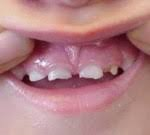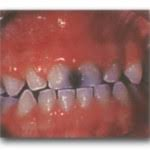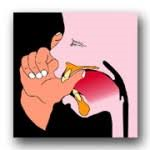 Teeth begin forming in your baby even before birth. All 20 primary teeth – also called baby teeth – are present in the jawbones at birth. The lower two front teeth are the first to break through the gums, sometimes as early as six months after birth. All of your child’s primary teeth usually appear by age three. At Miles of Smiles we offer complete Pediatric dental care to help start your child on a life-long path of dental health.
Teeth begin forming in your baby even before birth. All 20 primary teeth – also called baby teeth – are present in the jawbones at birth. The lower two front teeth are the first to break through the gums, sometimes as early as six months after birth. All of your child’s primary teeth usually appear by age three. At Miles of Smiles we offer complete Pediatric dental care to help start your child on a life-long path of dental health. Baby bottle tooth decay is a condition that can destroy the primary teeth of an infant or young child. It occurs when the child’s teeth are frequently exposed to sugary liquids for long periods, such as when falling asleep with a bottle. These liquids include milk (even breast milk), formula, fruit juice and other sweetened liquids.
Baby bottle tooth decay is a condition that can destroy the primary teeth of an infant or young child. It occurs when the child’s teeth are frequently exposed to sugary liquids for long periods, such as when falling asleep with a bottle. These liquids include milk (even breast milk), formula, fruit juice and other sweetened liquids. Sucking is one of a baby’s natural reflexes. It makes them feel secure and happy. Most children stop sucking on fingers, thumbs and pacifiers between the ages of two and four. If a child does not stop on his or her own, the habit should be discouraged after age four. Once permanent teeth come in (beginning about age six) sucking may cause problems with the proper growth of the mouth and alignment of the teeth. It can also cause changes in the roof of the mouth.
Sucking is one of a baby’s natural reflexes. It makes them feel secure and happy. Most children stop sucking on fingers, thumbs and pacifiers between the ages of two and four. If a child does not stop on his or her own, the habit should be discouraged after age four. Once permanent teeth come in (beginning about age six) sucking may cause problems with the proper growth of the mouth and alignment of the teeth. It can also cause changes in the roof of the mouth.